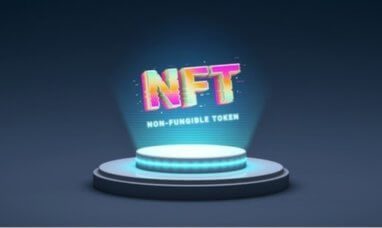So, you want to support the future developments of Cardano by staking its native token – ADA. At the same time, you want to earn passive income from the token you staked. As much as you may think that this is a thrilling opportunity, it may also be one of the most confusing crypto activities that you could venture into.
The process of staking a cryptocurrency asset requires mastery, time, equipment, and focus. In this article, we’ll talk about the most important aspects of staking ADA, including how the process works, the things to look for before deciding, and the best platforms to stake the token.
Staking 101: ADA Staking Explained
Staking ADA means two things. Firstly, it means that you are delegating or setting aside your cryptocurrency assets (usually crypto tokens) for the validation of transactions on the native blockchain. The concept of staking is based on the Proof-of-Stake (PoS) consensus algorithm, a type of consensus mechanism that allows transactions to be gathered into blocks. These blocks would then be combined or added together to create a blockchain.
By staking your Cardano (ADA) token, you are helping in the transaction validation or confirmation because the token acts as security for the network, as well as liquidity for an increased transaction speed.
The most fascinating aspect of staking is that you can earn the native token, in this case, ADA, as a reward.
ADA Staking Pool: What Is it and Why Should You Care?
Staking ADA is appealing as a passive income opportunity and is one of the reasons why Cardano (ADA) investors want to stake their tokens. Think of it as an investment, in the sense that you are willing to hold your ADA token for some time, yet meanwhile, you are earning certain APYs for putting the tokens to work.
The staking process takes place in the staking pool. But what does a staking pool entail? The staking pool is the ecosystem where the stakeholders (holders of the ADA token) stake their tokens. In this ecosystem also, the built-in staking Cardano calculator can be used to calculate the Annual Percentage Yield (APY) on the tokens you delegated.
How Can I Choose the Best Staking Pool for Cardano (ADA)?
The factors to consider before picking a staking pool for Cardano (ADA) include:
1) Decide on the Platform
The first thing you want to do is to decide on the platform where you would like to stake the token. Usually, stakeholders prefer to do everything in-house; that is, staking their ADA on the same platform they bought the token.
Cryptocurrency exchanges like Binance, Coinbase, and Kraken could be the best place to stake the token, especially if you are a beginner. However, this comes with a price – you don’t always have complete control over your assets. This is because those platforms operate on a centralized architecture, making it impossible for the users to be in control of their assets.
Using a decentralized or intermediary-free platform is the best option for those who want more autonomy and control over their tokens. This is why you want to consider non-custodial cryptocurrency wallets that offer full control, including access to the public and private keys.
Examples of some non-custodial wallets you may want to use are:
-
-
-
- Daedalus Wallet
- Yoroi Wallet
- Exodus Wallet
-
-
2) Does the Pool Support Decentralization?
Decentralization is the most important element of the Cardano project. As a project that wants to promote intermediary-free transactions, Cardano wants to decentralize every aspect of its business model – including the staking pool.
Therefore, the staking pool you want to delegate the ADA tokens to should support decentralization. How would you know that it does?
Check for Saturation: You can check for this by finding out if the staking pool has above 64 million units of Cardano (ADA). If it does, it means that the pool is over-saturated, and is, therefore, not in line with the decentralization model of Cardano. Consider looking for staking pools that do not have up to 64 million ADA.
Avoid delegating your Cardano (ADA) tokens to groups that have a large number of staking pools. An example of such groups is cryptocurrency exchanges like Binance.
3) Consider the Pledge
The pledge is another important metric you want to consider. Granted, staking cryptocurrencies, including Cardano (ADA) can be risky. As a result, you want to have as much confidence as you can muster in the staking pool. The Pledge is one of the most important factors to consider before picking a pool.
A Pledge has to do with the amount of the Cardano (ADA) tokens that the pool operator(s) have staked or delegated to the pool. This is a sign of goodwill, indicating the willingness of the pool operator to be a part of the process, including staking some ADA tokens to show how committed they are.
Also, the Pledge in a staking pool can be a source of revenue for the pool operator. Under the Cardano Proof of Stake reward mechanism, the pool operator can earn rewards on the Pledge, as well as collect fees on the validated blocks.
The general idea is to look for a staking pool that has a higher Pledge, because the higher the staked ADA, the higher the chances that the pool operator wants the pool to succeed.
Take note that the Pledge could also attract some charges. For example, there could be an increase in the fees paid by the delegators.
4) Choose an ADA Staking Pool with Affordable Fees
Using the staking pool attracts fees from two sides. On the one side, you are paying the fixed fee and on the other, you are settling the margin.
Let’s delve deeper into those two terms so you can understand them better.
Fixed Fee: The fixed fee in the staking pool refers to the set or specified fee charged by the pool operator for the operational costs of the pool. The fixed fee is deducted from the total rewards that were produced in 5 days (an epoch) in the staking pool.
Pool Margin: This is the percentage charged by the pool operator. This is charged after the fixed fee must have been deducted. The pool operators charge the margin to cover the costs of running the respective pools. The margin will be charged and deducted before the remainder of the rewards is distributed to the delegators (those who staked their ADA tokens).
Let us assume that you staked your Cardano (ADA) tokens in a staking pool that has a fixed fee of 1,000 ADA tokens and a margin of 2%. At the end of the pool duration, the total number of rewards realized was 20,000 ADA tokens. The first deduction would be the 1,000 ADA tokens (the fixed fee). This leaves the remainder of the rewards at 19,000 ADA tokens. The margin would then be deducted. The deduction goes thus:
19,000 ADA tokens (the remaining rewards after fixed fee deduction) x 2% (the margin). That gives 38,000 ADA tokens. Divide by 100, which gives 380 ADA tokens. So, in essence, the margin for the 19,000 ADA tokens is 380 ADA tokens. Add that to the 1,000 ADA tokens fixed fee. It would be a total of 1,380 ADA tokens paid for both the fixed fee and the margin settlement.
Therefore, the remainder of 18,620 ADA tokens would be distributed to the delegators (those who staked their ADA tokens in the pool).
5) Take Note of the Staking Requirements
Last but not least, you want to take note of the requirements for staking or delegating your ADA tokens to the pool. This includes the ADA staking minimum, the maximum amount of the ADA tokens you can stake, and the expected Annual Percentage Yield (APY).
You can always use the Cardano POS calculator to calculate the Return on Stake (ROS) on the amount of ADA tokens you staked.
Here are some things to have in mind:
-
-
-
- The Annual Percentage Yield (APY) can be anywhere between 5% and 8%.
- The rewards you will earn are determined by the amount of the Cardano (ADA) tokens you delegate to the staking pool.
- The duration of the pool can range between a month and 3 months.
-
-
Final Thoughts
Staking Cardano (ADA) is ideal if you are looking to use it as a long-term financial instrument. Instead of leaving the tokens in your wallet, why don’t you stake or delegate them and earn passive income while waiting for the long-term price projection you expect to play out?
Featured Image: Megapixl








